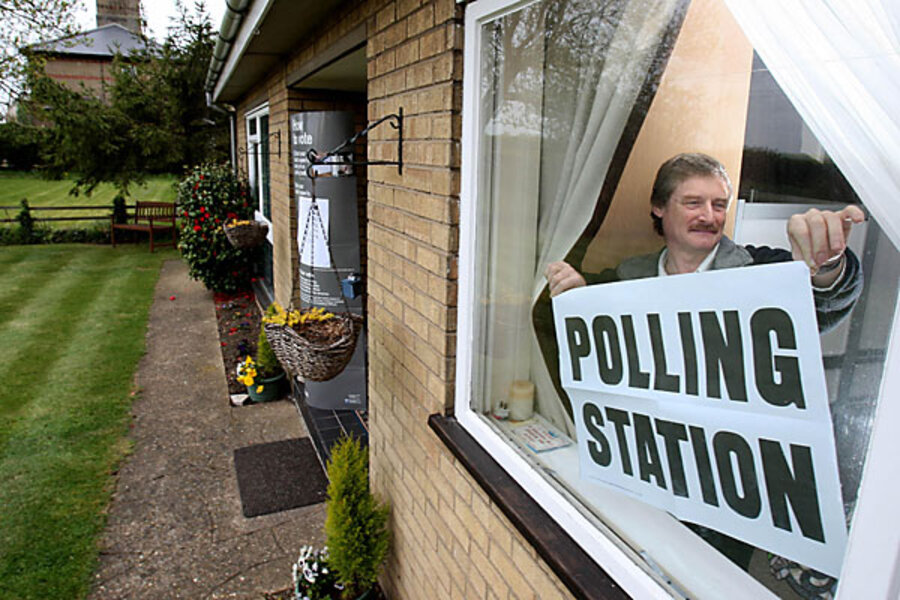UK election 101: How might Britain change its 200-year-old voting system?
Loading...
| London
Early exit polls from the UK election, released shortly after 10 pm local time (5 pm Eastern Time), indicated that the vote may have resulted in a "hung parliament" -- a legislature in which no party won an outright majority.
They also pointed to something even more disturbing in the eyes of Britain's electoral reformers: The likelihood that the Liberal Democrats could come in second in the national vote, but third when it comes to the number of seats awarded in the next parliament.
The Liberal Democrats have long demanded a shift from Britain's "first past the post" electoral system to a proportional representation system for just this reason.
What's the difference between the two?
The current system is a "winner-take all" approach in which the candidate with the most votes in any district takes the seat, much like US congressional votes. The system has been used to elect MPs to Britain’s parliament for around 200 years.
In the proportional representation (PR) system, each party is allotted a number of seats roughly equal to its proportion of the national vote. It is widely used across Europe.
While the British method is simple, speedy, and likely to lead to decisive results on a nationwide basis, it has weaknesses. MPs are often elected without an overall majority of all votes cast (since three or more parties contest many seats) and it remains possible for parties whose votes are spread out to finish first in terms of nationwide support, but have fewer seats than a rival party.
PR, in which voters rank the candidates in order of preference (ie, first choice, second choice, third choice,) achieves a closer match between the support for individual parties and the percentages of seats they win in parliament. It tends to lead to coalition governments as no one party is strong enough to achieve a majority.
If Conservative Party leader David Cameron, whose party is expected to have won the most seats but not enough to form a majority government on his own, reaches out to LibDem leader Nick Clegg to enter a coalition, a promise of electoral reform could well be the price of his support.
Related:
UK election 101: What is a hung parliament?
Britain's Cameron – prime minister-in-waiting?
Blog: Can Britain's Cameron learn from Obama's mistakes?
David Cameron wrests back (some) control in second UK debate





